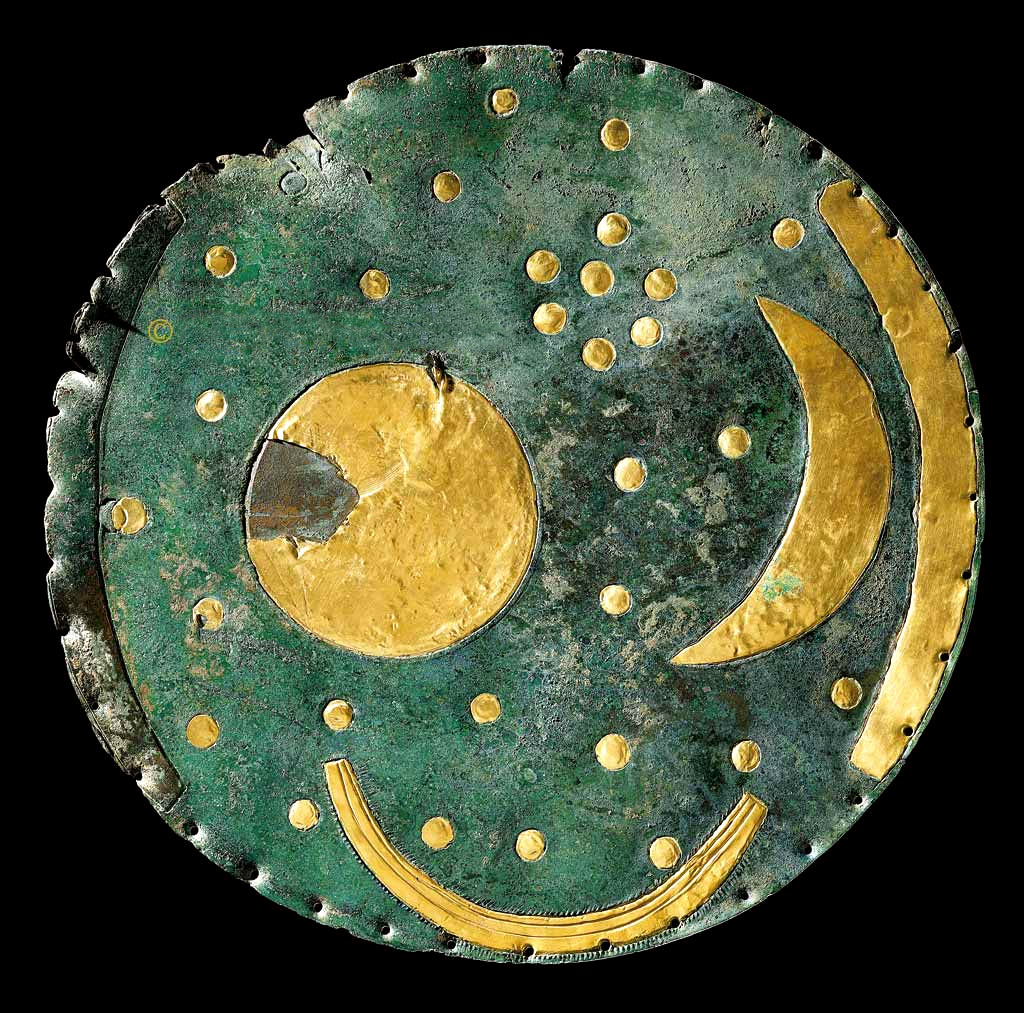Secrets of the Star Disc
When grave robbers ransacked a Bronze Age burial in Germany, they had no idea that they had unearthed the find of a lifetime.
The disc they found combines an advanced understanding of the stars with some of the most sophisticated religious imagery of the age.
In intellectual achievement and also age, it surpasses anything yet found in Egypt or Greece. It seems that civilization had already dawned in North Central Europe.
The Nebra Sky Disc is a bronze disc inlaid with gold symbols, associatively dated to c. 1600 BCE. The symbols are interpreted generally as a sun or full moon, a lunar crescent, and stars (including a cluster interpreted as the Pleiades).
Two golden arcs along the sides, marking the angle between the solstices, were added later. A final addition was another arc at the bottom surrounded with multiple strokes (of uncertain meaning, variously interpreted as a Solar ship with numerous oars or as the Milky Way).
The disc is unlike any known artistic style from the period, and had initially been suspected of being a forgery, but is now widely accepted as authentic.
The creators of the disc have been associated with the Bronze Age Unetice culture. Their physical type, which matches that of the preceding Corded Ware people, is still commonly found in North Central Europe today.
Hydrodynamic patterns in the culture area suggest that these people were speakers of Indo-European, with pre-Germanic dialects in the area to the north of the Ore Mountains, including the site of discovery.

Geen opmerkingen:
Een reactie posten